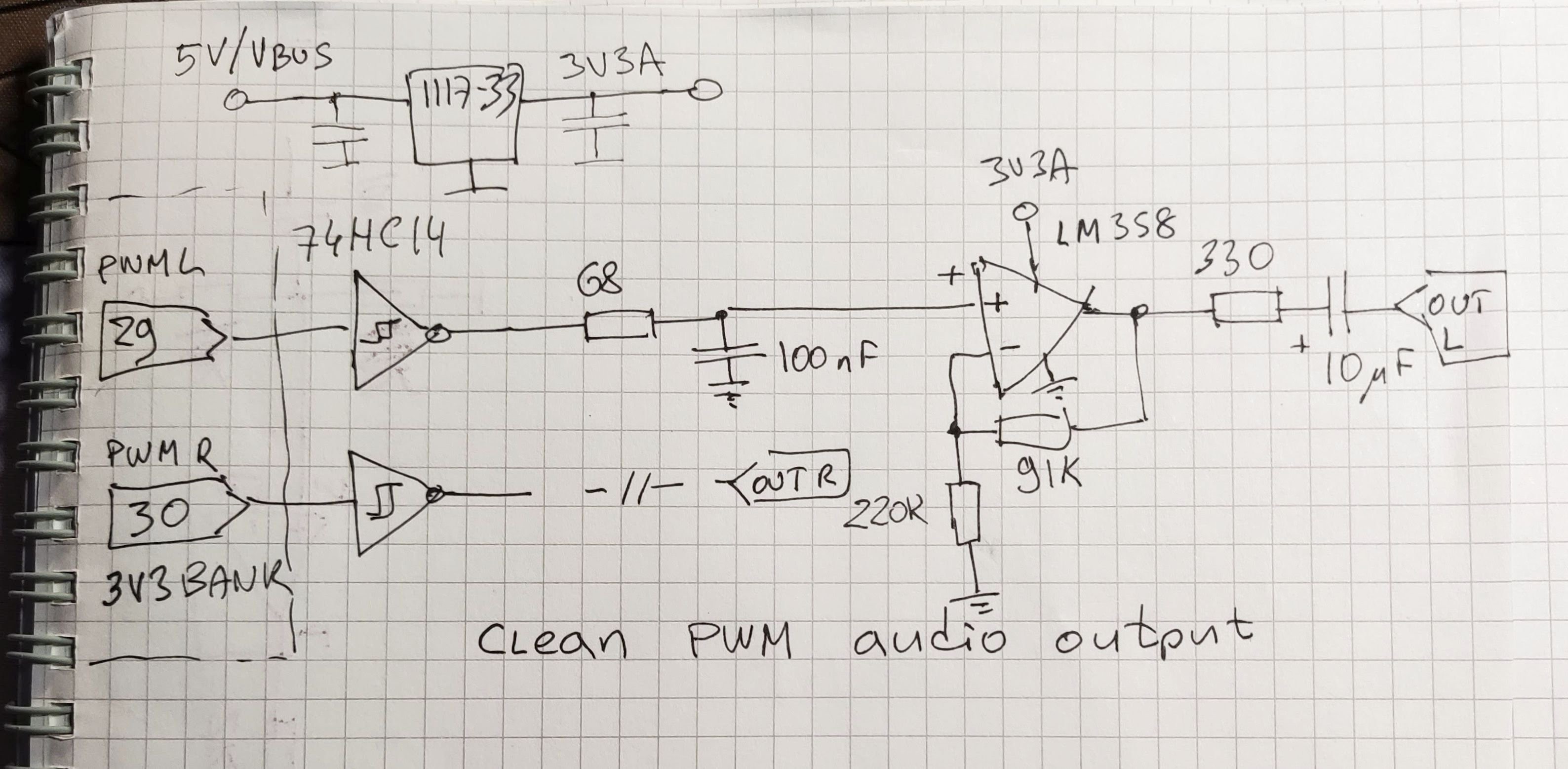In my previous update I already had a PWM sound output which was okay for testing, but it was noisy. Regardless of the state of the output, there would be a constant whine and grumble. Not too loud, but it was at the levels impossible to ignore. I connect vector06cc to the same pair of speakers which I have for my main PC and it made it very annoying.
Of course I tried filtering the power, tried bypassing the virtual ground and all that stuff.. But nothing really helped. The noise was filtering right through the signal lines. I searched the net for a solution. Maybe the search terms weren't right, but somehow it seemed that there's no solution for this. You could find a flat out dismissal ("PWM is digital, your argument is invalid") or a non-solution ("you can't make PWM clean, use a DAC"). I didn't want to put up with that, at least not so easily.
PWM works by slicing the voltage on the power rail. And if the power rail is dirty, the PWM carries all this dirt farther down the pipeline. So the dirt kind of travels on top of the square wave. And because the dirt can have audible frequencies, you can't really filter it. The solution is actually fairly simple: make a clean power source and use it to re-cut the dirty PWM signal into a clean PWM signal.
- make clean power source
- replicate PWM using clean power
- filter, amplify, profit
Here's the schematic that implements this idea. It's very simple, but it's a fruit of a lot of frustrating experiments.

The crucial part here is the humble 1117-3.3 LDO. I used a drop-in 78xx replacement module which already has ceramic capacitors on it. The output of this module is seriously cleaner than you get on any of the power rails near FPGA. It powers a 74HC14 (which I picked simply because it was on the desk already anyway). You can actually skip the middle part, but it will probably radiate something unwanted and be more quiet than ideal. So there's a very simple filter and a buffer amplifier. I didn't want to bother with virtual grounds so I used the most basic single supply DC amplifier configuration. It limits the range somewhat, especially considering we only have 3V3 power. But simplicity wins, especially for stereo where you have to repeat everything twice.
I can hear some high pitched whine when I max out the volume on my speakers. It's not ideal. But it's perfectly acceptable for what it is. I think this whine could actually be PWM related and can be helped by a better filter circuit, but that's for another day.
Another important update is a working keyboard. After some libations I decided in favour of Pi Pico as a USB host. All it does for now is, it converts pressed keys from the HID report into the full keyboard matrix (which is just 9 bytes) and sends updates to the core via a serial line, which is just a single wire. I experimented with other devices, some of which I documented in previous updates. This one is by far the most accessible and universal and it offloads a lot of complex logic from the FPGA. It also opens possibilities to use other kinds of USB devices, for example a mouse and a USB mass storage device.
I recorded a video about recent developments as of mid-August 2024.
 svofski
svofski
Discussions
Become a Hackaday.io Member
Create an account to leave a comment. Already have an account? Log In.